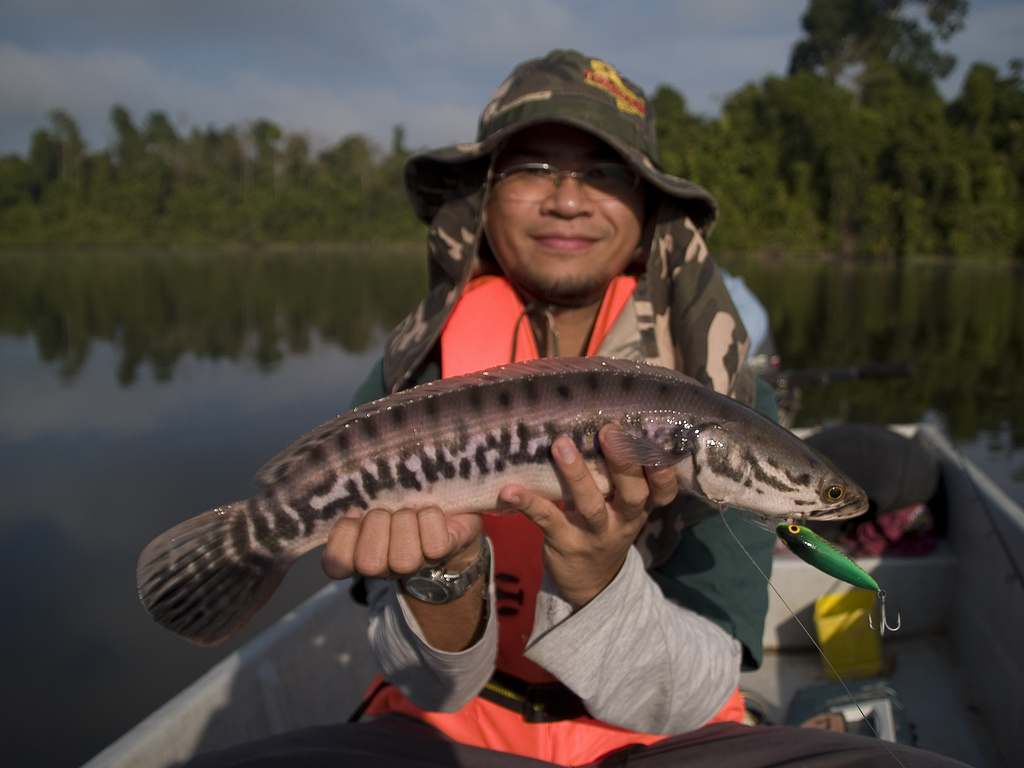Some said it ate small woodland creatures, some said it walked on land, but none of those were true about the snakehead fish that has invaded Virginia. Though, what is true, starting July 1, Virginia restaurants will be able to serve the invasive Asian fish for lunch and dinner after a new law was passed by the General Assembly and signed by the governor.
Once dubbed “frankenfish,” the northern snakehead, or Channa argus, has been on the menu in grills all over Maryland and the D.C. area for years, with restaurateurs in Virginia hoping to sell the toothy, what some call “incredibly tasty” fish to swoon customers to a new type of delicacy.
House Bill 1404, introduced by Delegate Margaret Ransone (R-Westmoreland), will end the prohibition against, “importing, possessing, transporting, purchasing, or selling any nonindigenous aquatic nuisance species without a permit.” The bill was signed into law last month by Governor Ralph Northam.
Currently, the Virginia Department of Game and Inland Fisheries urges, but doesn’t require fisherman to kill snakeheads. Since they are not native to U.S. waters and have no natural predators here, they cause damage to the ecological system. They are called snakeheads due to their eel-like shape, mouthful of sharp teeth, and an air bladder that allows them to live outside water for up to three days.
While they cannot technically “walk on land,” they can wiggle on the ground in effort to move from different bodies of water close by, which have helped their proliferation in the U.S. Fishery scientists have found individuals of four species in waters of California, Florida, Hawaii, Maine, Maryland, Massachusetts, Rhode Island, Virginia, and Wisconsin.
Last year, Senate Bill 906, was written to increase the penalties for those introducing snakeheads into Virginia waters. One can face a punishment of up to 12 months in jail and/or a $2,500 fine after being charged with a Class 1 misdemeanor.
According to a report from The Free Lance-Star, it was discovered that individuals had been illegally stocking snakeheads in ponds, lakes, and reservoirs near Fredericksburg. The bodies of water included: Abel Reservoir in Stafford County, Hunting Run Reservoir in Spotsylvania County, Ruffin’s Mill Pond south of Fredericksburg, and Pelham Reservoir in Culpeper County.
In May, snakeheads were also discovered in a reservoir in Colonial Heights, south of Richmond.
In the early 2000s, snakeheads were spotted in the Potomac and its tributaries, typically in shallow, slow-moving sections of the river with copious vegetation. Early predictions from environmentalists claimed the aggressive Asian predatory fish would wipe out local populations of small and large-mouthed bass, sunfish, and other local swimmers. However, that proved to be much overblown as snakeheads quickly fell into a quiet niche in local river ecosystems.
When they became a hot topic of discussion, rumors had it that they posed a danger to small children near waterways and ponds; but this was also untrue. In fact, humans are the main danger and predator to snakeheads, as they grow quick and are a hearty catch for fishers.
For example, last month, a record-breaking 19.9-pound snakehead was caught in Mattawoman Creek in Charles County, Maryland.
There is relatively little hope of completely eradicating the invasive fish from local waterways – they are fairly intelligent and very difficult to catch. Therefore, lawmakers are hoping that if there is sufficient market demand for succulent snakeheads, which is now going for approximately $6 per pound, the population will be kept in check.







